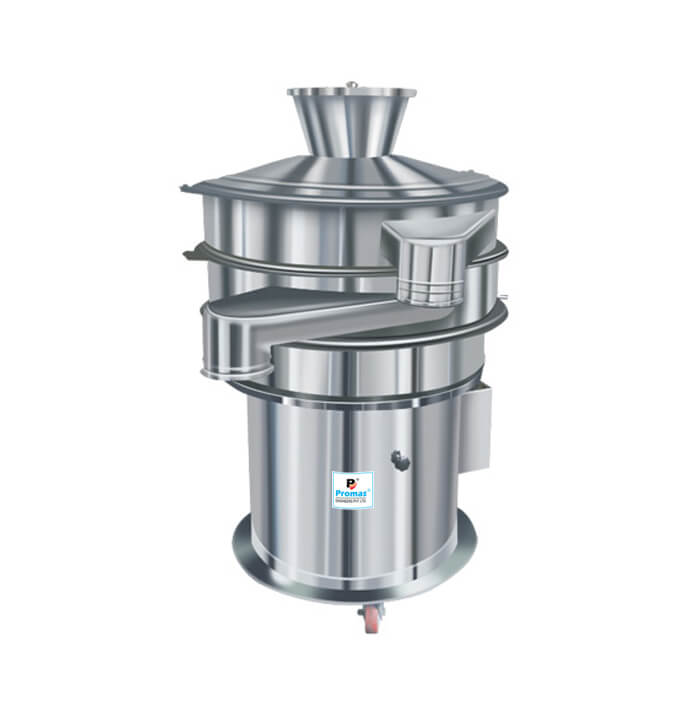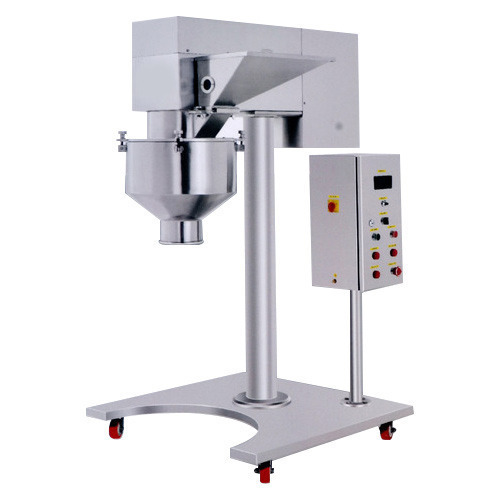I understand you want to screen material (separate into different grades by particle size).
So, I’ve put together this guide for you.
Today, you’ll discover how to select the ideal Vibro sifter machine for your material processing requirements. I’ll go over everything with you, including a fundamental definition, functioning concept, designs, parts, and why you need it, to name a few.
Later, I’ll suggest the best Vibro sifter equipment for you to purchase.
Let’s get started.
What is a Vibro Sifter?
This is one of the machines that you’ll need to process a wide range of pharmaceutical items, as I just described. Of course, because each machine is made differently and has various qualities, each machine has a distinct job to play.
So, if you need separation, scalping, or grading during the production process, this is the equipment you need. A Vibro sifter machine, in other words, is a vibratory sifting device that performs separation, grading, and scalping operations.
It’s a revolving circular unitary screen that’s generally used to separate and grade different types of bulk materials.
It can be used to separate solid materials from solids, solids from liquids, and particle gradation, for example. In a variety of applications, it performs all three fundamental roles for both wet and dry granulations. This machine is used in a variety of industries in addition to the pharmaceutical business.
Chemical, cement, and food processing industries are just a few of these industries. The most important thing to remember is that a Vibro machine’s job is to sift materials during processing. This appears to imply that it primarily separates the mass composition of materials, making it one of the most basic devices in the manufacturing process.
As a result, the design of this equipment is intended to assist in reaching the desired product quality by removing large granules.
Parts of Vibro Sifter
Motor: This is the part that gives the machine its power, allowing it to run smoothly and do all of its tasks. The vibrating sifter, as you might expect, runs on electricity. As a result, the motor is in charge of turning electric power into energy that powers the unit. So, if you see a constant multi-plane vibratory motion, know that it’s due to the power generated by the electric motor.
It’s critical because the vibratory motion speeds up the passage of constituent particles through the sieves. The size of the motors for this machine, of course, vary based on the device’s size and design. Another factor that dictates the sort of motor that such a machine uses is its production capacity.
Hopper Lid: This particular component is sometimes referred to as the cover lid.
It primarily protects the material being processed from the upper area from falling while the machine vibrates.
The cover of most Vibro sifter devices is always made of metallic material. Clearly, this aids in the precise avoidance of contamination and dusting. As a result of the clamping rings that hold the lid together, it is possible for it to remain integral during processing.
Filter Screen: This component is critical in ensuring that the material has a smooth surface finish during processing. It’s built of wire mesh, which has a reasonably fine surface that’s important for sieving materials and producing exceedingly fine particles. You can also use its performance to prevent any instances of leakage during material processing.
Wire Mesh Screen Ring: It is mainly a circular component to which the wire mesh screen is attached. The screen ring usually contains adhesive that aids in the bonding of the mesh, making it perfect for increasing the mesh’s lifespan.
Oversized material outlet: This component is sometimes referred to as an enormous material chute. It’s ideally a valve that lets go of the relatively large material particles left over after the screening operation. It is situated on the machine’s upper section to allow such particles to readily exit the device.
Screened material outlet: The larger material outlet is the polar opposite of this. It’s a chute that discharges all of the machine’s graded, screened, or sized granules for further processing if necessary. This component is found in the filter screen’s lower part. This is critical because it allows all of the screened particles to easily collect and exit the machine.
Springs: The number of springs in a Vibro sieve machine is determined by the specific applications it is designed to handle. These springs are typically the components that allow the machine to move hydraulically. Even though the unit vibrates to separate the materials, they keep the upper section of the unit intact.
The springs, in a broader sense, allow the machine to vibrate freely and act as a damper.
In this scenario, it stops the vibrations from reaching the floor. This machine’s springs also assist in properly placing the unit for maximum efficiency during material processing.
Control Panel: This is, without a doubt, one of the most important features of this sort of sieving machine. A control panel is often made up of a number of buttons that transmit a signal to the equipment indicating what action it should perform.
It is a vital part, in my opinion, because it incorporates technology, which substantially impacts various parts of the machine’s circular function. Some machines have an LCD touchscreen display on the control panel from which you may control all of the machine’s functions.
Vibro Sifter Machine Classification and Design
The design, size, and kind of equipment you purchase will be determined by the expected production capacity. The following are some of the most important components of the design:
- Depending on the application, this machine is available in single, double, or triple layer configurations. However, the number of sieves required for your unit is determined by the degree of product separation it is built for.
- This machine can be used in a variety of situations. It can also be used in industrial processes and scientific studies. So, what’s the difference between the two cases? Pay attention. A compact Vibro sifter would be appropriate for small-scale applications. You can choose from a variety of larger alternatives for industrial procedures. If you do your search properly, you will find all sizes on the market.
- In essence, the overall design of this type of machine is determined by the manufacturer. What I mean is that each manufacturer creates their own distinctive designs in the hopes of gaining a competitive advantage. For example, you might come across a machine with an L-shaped sieve frame design but a distinct detachable design.
Conclusion
Technically, purchasing a Vibro sifter machine necessitates extensive investigation. Of course, they come in a variety of sizes, shapes, patterns, and functions. I’m delighted that, at the very least, this article has supplied you with useful information for your hunt for this type of equipment.
At Promas Engineers, we promise you nothing less than a high-quality material separation and grading machine. We are the finest Vibro Sifter manufacturer and supplier. However, if you have any questions, issues, or require additional information, please do not hesitate to contact us.





